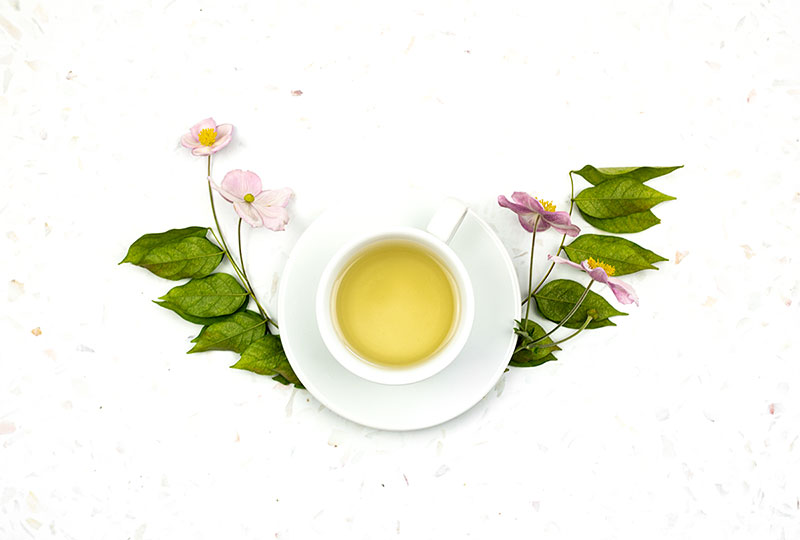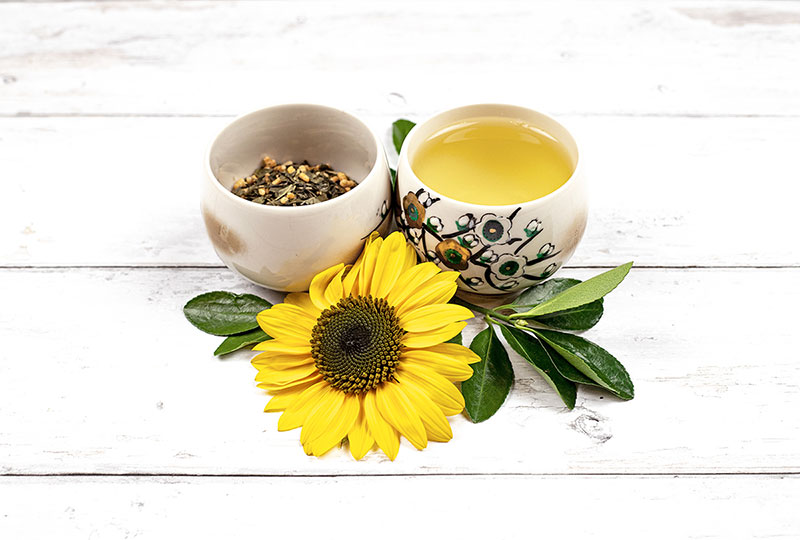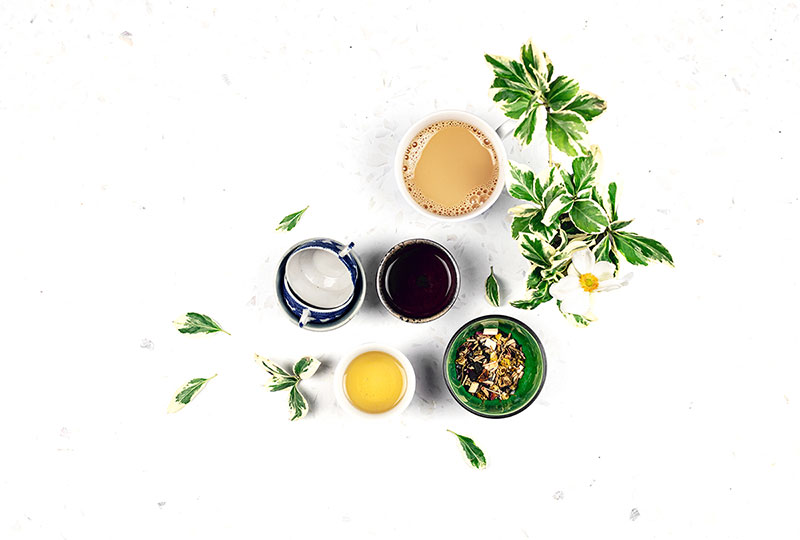Best Cups for Drinking Tea Guide
For the passionate tea drinkers, one tea cup is never enough. Besides, is there a greater joy than drinking tea from a cup you like? With or without handles, big or small, glass or porcelain, there is a perfect cup for every tea. Read which cups are best for drinking tea.
Short history of a tea cup
According to the legend, tea was invented almost 5000 years ago by Shen Nong, a Chinese emperor and a father of Traditional Chinese Medicine. The first written texts about tea appeared more than 1000 years ago. A very important one, The Classic of Tea, written in the second half of the 8th century by a Chinese tea master Lu Yu, mentions a whole list of tea utensils needed to prepare a cup of tea–including a tea bowl. Tea bowls were, in fact, the first tea cups. Tea cups or tea bowls without handles are still an important (and beautiful) part of tea drinking cultures in many Asian countries. Handles were invented almost 1000 years later–in Europe[1].
Qualities of a great tea cup
Today, just as there are thousands of different teas, there are thousands of different cups to drink your tea from. If you are a regular tea drinker, it’s very likely you have a favorite cup for a daily use, and a few more for special occasions or special teas.
Difference between a teacup and a tea mug
And here’s the most interesting parts. Although today we may call both mugs and cups simply a cup, there’s a big difference between those two. Tea mugs are usually big, bigger than 8oz (although they may be smaller too), and cups are quite small–sometimes as small as 10 ml. Mugs are great for slow sipping, especially herbal or daily teas, while cups are better for formal occasions, proper tea parties, or drinking specific types of tea. Mug will usually have a handle, and cup doesn’t need to have one. There’s usually no difference between a tea mug and a coffee mug.
As strange as it may sound, not all tea cups will be good for all types of tea. When deciding on the cup, pay attention to the following:
1. Does the size match your tea, teapot or a strainer?
If you are making tea for two people but have a smaller teapot, opt for smaller cups.If you are using a strainer rather than a teapot, bigger tea cup or a tea mug are a better option.
2. Does it feel comfortable in the hand
Cup should always feel comfortable in your hand. Otherwise, you may risk spilling your tea, and even getting burned. No matter how nice a cup or a mug is, always check if it feels comfortable in your hand. Some cups don’t have a handle, like Japanese yunomi or chawan tea bowls. If you are a tea beginner, to minimize the risk of getting burned always brew tea as instructed.
3. Does the color match your tea?
Some teas will look better in bright-colored cups, the other will look more delicious in dark-colored ones. For example, if you want to enjoy the color of Japanese sencha, (especially fukamushi type), choose light, white, blue or glass tea cups. They will intensify the already intense green tea color. If you want to drink delicious milk tea, transparent glass cups or dark mugs are a great choice, especially stoneware ceramic.
4. What is your cup made from?
Today, cups can be made of many materials–just like teapots. You can choose from ceramic, glass, metal, wooden or plastic cups. Ceramic cups can be porous such as Yixing purple clay teaware, or non-porous such as stoneware or porcelain. If you are using your cup for different types of tea, choose a non-porous material.
5. How well does it keep the heat?
Some cups will keep heat longer than the others. If you want your tea to stay hot longer, opt for taller and more narrow cups. On the other hand, sometimes smaller and flatter cups are a better option. For example, for green or white tea.
6. How do you plan to use it?
If you heat the water for tea in a microwave rather than using a kettle, some cups will be unsuitable. For example, stainless steel cups, regular plastic cups, or unique Yixing zisha cups and porcelain cups with metallic decorations should not be used in a microwave. Borosilicate glass and stoneware will generally be safe.
Does tea taste different in different cups?
Tea may actually taste different in different cups. Many tea specialists will argue that even the smallest difference and even the color of the cup may influence the flavor of tea. While those differences may be very subtle, you may notice them yourself too. For example, chai tea will always taste better in a small unglazed kulhar, Japanese sencha in a stoneware yunomi and Earl Grey in a beautiful porcelain cup. However, the flavor often depends on the perception too, so a beautiful and matching cup will very likely make your tea taste better.

Dragon Well tea in a cup
Best tea cups by type of material
Tea cups or mugs can be made of different materials. As we already mentioned, they include plastic, metals, glass, wood or ceramic. Not all of them are microwave safe and dishwasher safe, and some should be cleaned with water only. Some materials are more delicate, while others may be more resistant. However, the ultimate decision on which cup to use should depend on many factors–including which tea you are drinking, how hot it is, how you plan to drink it and what kind of drinking experience you are looking for.
Glass tea cups
Today, glass teaware, including cups and mugs, is available in many forms and sizes. They are a beautiful addition to any teaware collection and can be used for drinking almost any type of tea. Borosilicate glass cups are more heat resistant and durable. Other great option is a vacuum insulated double walled glass cup that does not only look beautiful, but won’t get hot on the outside – meaning no risk of getting burned.
Metal tea cups
There are different metal cups–from stainless steel cups, to copper cups or enamel coated steel cups. These materials are more often used for mugs, rather than cups. Cups with or without saucers are available too. Other popular type of metal mugs are insulated mugs. They often look similar to a thermos bottle, retain heat and protect your hand from getting burned. They are great for traveling or taking your favorite hot beverage wherever you go. When choosing a metal cup, make sure it’s lead free and safe.
Ceramic tea cups
Ceramic cups can be porous and non-porous. They include porcelain and stoneware, each having its own benefits. The regular ceramic cup is usually white, with or without a simple decoration, and looks very similar to a coffee cup. In fact, you may use it to drink both coffee or tea.
Porcelain cups are usually smaller, elegant and have a saucer, while stoneware cups are often either bigger or smaller without a handle, such as many Japanese tea cups. The most highly prized porcelain cups are bone china cups, the most translucent and strongest of all porcelain cups.

Genmaicha tea with bancha in smaller cups
Plastic cups
Plastic cups are the least appealing of all materials,but may come in handy on some occasions. They can be made of styrofoam or other plastic. They are usually disposable. Don’t use them with boiling water.
Best cups for different teas
If you plan to drink a lot of Chinese tea, learning how to brew it properly means drinking it properly too. The best cups for drinking Chinese tea will usually be very small. You don’t need the tiniest ones, but anywhere between 30-70ml will give you the best tea drinking experience. Chinese teapots are usually small as well, so a big mug will not be the best choice.
If you plan to enjoy a lot of tea lattes, tall glass or stoneware mugs may be the best option. If you enjoy classical blends, there no greater joy than drinking smooth and full-bodied English breakfast with a few drops of milk or a citrusy Earl Grey in a beautiful porcelain cup. Other daily teaware options include regular porcelain or glass mugs. To enjoy Japanese green teas, 80-150 ml stoneware cups are a great choice. And for matcha, always choose chawan, a special type of tea bowl. On the other hand, if you are making a matcha latte, opt for elegant porcelain or glass cups with saucers.
For black or dark tea, or any tea that requires boiling or nearly boiling water, choose smaller handless cups, or cups with handles. For green tea, bigger handless stoneware, porcelain or glass cups will be a great option. If you use a strainer for making loose tea, choose mugs rather than cups. Cups may be too small for many strainers. Ideally, tea cups should be used with a teapot.
If you want dishwasher and microwave safe cups, that still look beautiful and that you can use with any type of tea, choose glass or bright-colored stoneware cups.
Learn more about brewing tea and how to choose the best teapot here.
References:
[1] https://womensconference.byu.edu/sites/womensconference.ce.byu.edu/files/10d_0.pdf



